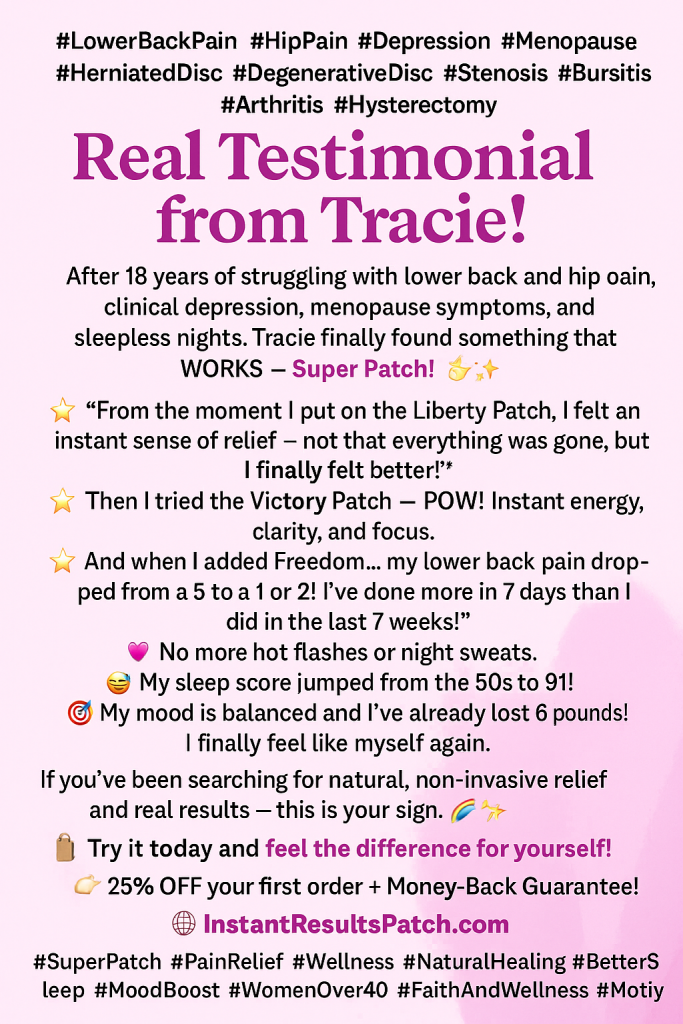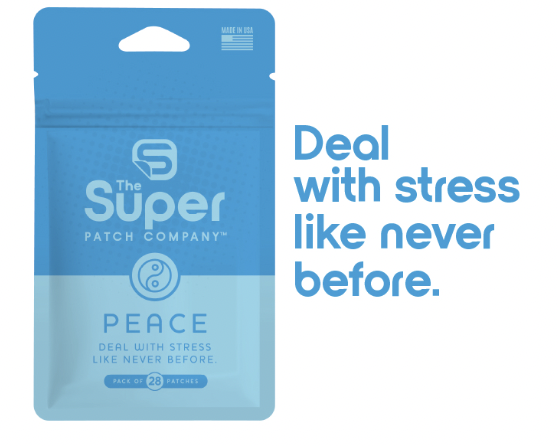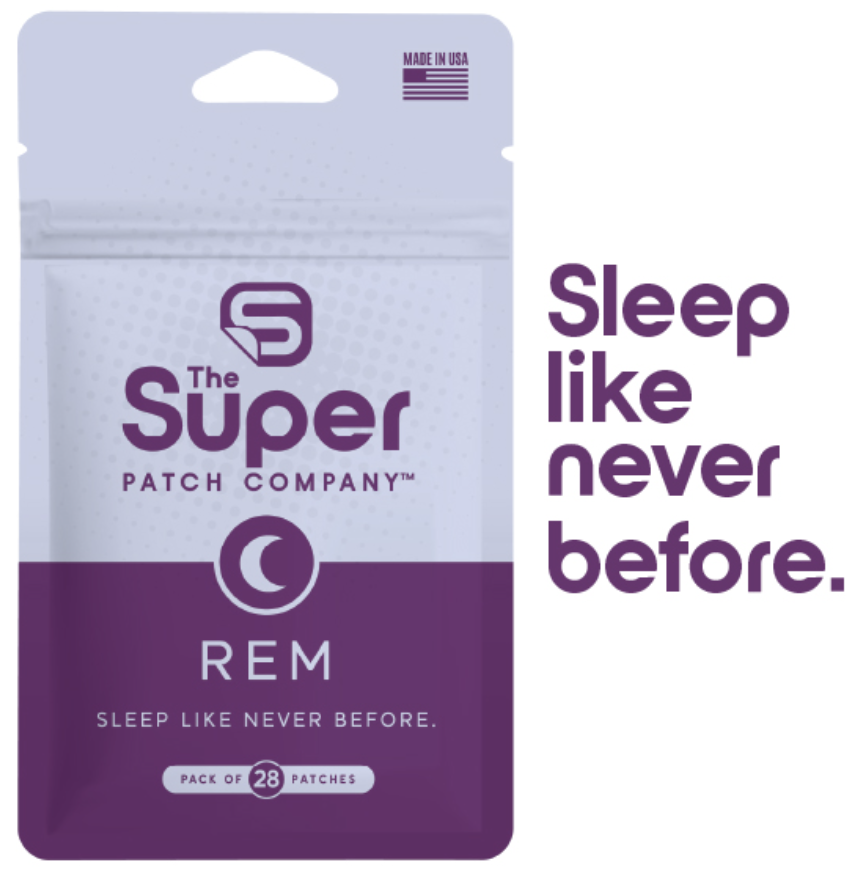🌟 Real Testimonial from Tracie! 🌟
#LowerBackPain #HipPain #Depression #Menopause #HerniatedDisc #DegenerativeDisc #Stenosis #Bursitis #Arthritis #Hysterectomy

After 18 years of struggling with lower back and hip pain, clinical depression, menopause symptoms, and sleepless nights, Tracie finally found something that WORKS — Super Patch! 💪✨
⭐ “From the moment I put on the Liberty Patch, I felt an instant sense of relief — not that everything was gone, but I finally felt better!
⭐ Then I tried the Victory Patch — POW! Instant energy, clarity, and focus.
⭐ And when I added Freedom… my lower back pain dropped from a 5 to a 1 or 2! I’ve done more in 7 days than I did in the last 7 weeks!”
She also shared:
💖 “No more hot flashes or night sweats.
😴 My sleep score jumped from the 50s to a 91!
🎯 My mood is balanced and I’ve already lost 6 pounds!
I finally feel like myself again.”
If you’ve been searching for natural, non-invasive relief and real results — this is your sign. 🌈✨
👉 Try it today and feel the difference for yourself!
🛍 25% OFF your first order + Money-Back Guarantee!
🌐 InstantResultsPatch.com
#SuperPatch #PainRelief #Wellness #NaturalHealing #BetterSleep #MoodBoost #WomenOver40 #FaithAndWellness #MotivationalMonday #LauriesLoves #MindBodyBalance #NaturalRelief #HealthJourney #EmpoweredWomen




